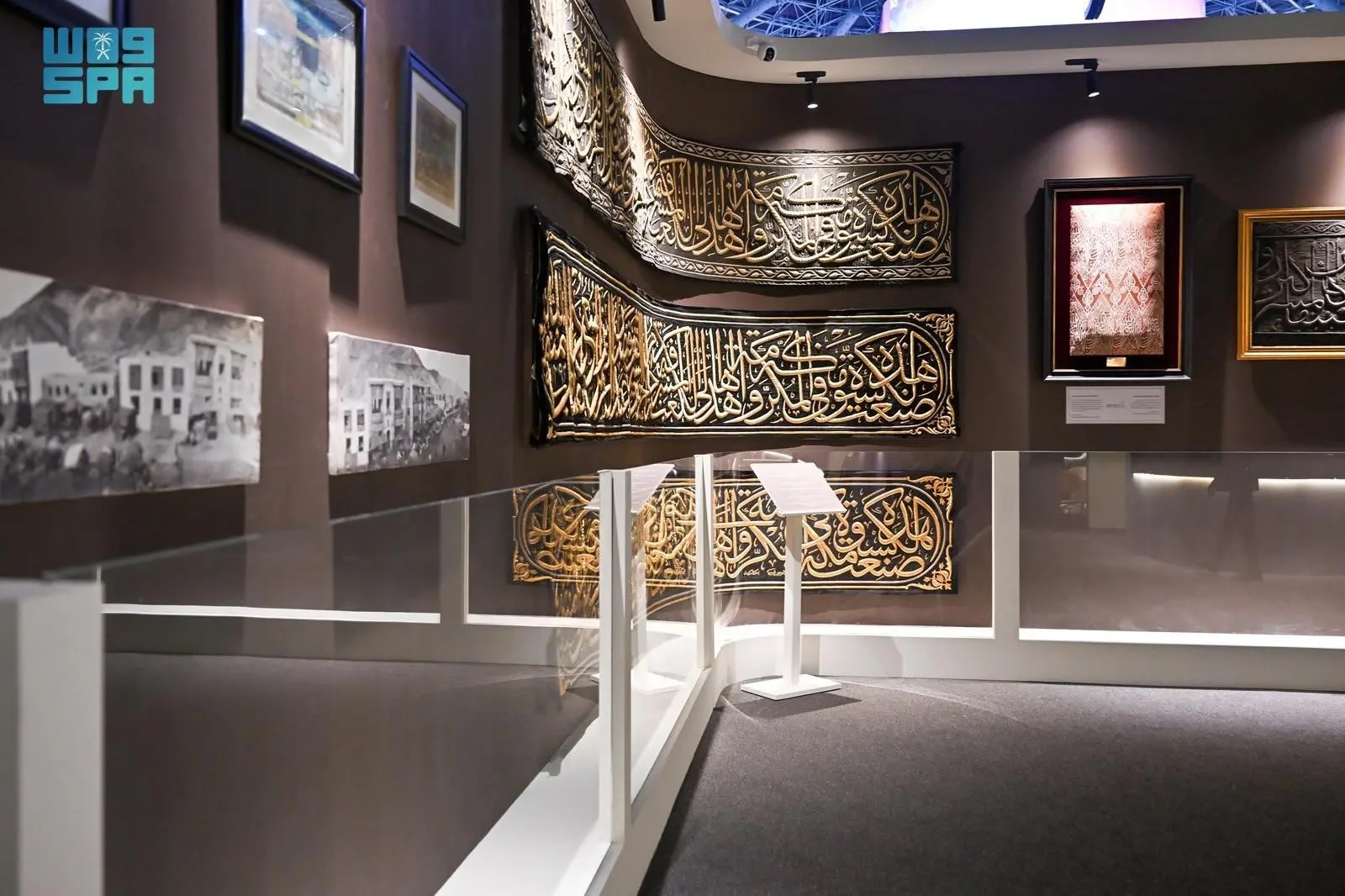
'Architecture of the Two Holy Mosques' Exhibition at Darah Pavilion Showcases Expansions through History at Hajj Conference
King Abdulaziz Foundation for Research and Archives (Darah) is showcasing an exhibition titled “Architecture of the Two Holy Mosques and the Holy Sites” as part of the Hajj Conference and Exhibition 2025. The pavilion offers a visual journey through key stages in the expansions of the Two Holy Mosques and the development of the holy sites over the decades, from the earliest construction works to the completion of major projects that define the sacred places today.
The pavilion takes visitors back to the first expansion phase of the Grand Mosque, featuring rare photographs showing the construction of the second floor of Al-Safa and Al-Marwah corridor (Al-Masaa), highlighting the advanced architectural and engineering work of that time. The exhibition also includes documentary footage capturing the final moments of the first and second expansions, with scenes showing heavy equipment, excavation, and concrete works at construction sites.
Extending to Madinah, the display presents historical photographs of the Prophet’s Mosque, including the western façade and the installation of large sunshades built under the directive of the late King Faisal bin Abdulaziz Al Saud, which marked a major milestone in enhancing comfort within the mosque courtyards.
A prominent section of the pavilion is dedicated to the Kiswa (the covering of the Kaaba) and the evolution of its craftsmanship over the decades. It features samples and photographs documenting the stages of production — from spinning and weaving to embroidery and modern design technologies — as well as images of artisans at the King Abdulaziz Complex for the Holy Kaaba Kiswa, meticulously working with gold and silver threads, blending manual artistry with advanced technology in service of Islam's holiest site.
Beyond the Two Holy Mosques, the exhibition highlights the development of the holy sites, showcasing archival images of pilgrims’ tents in Mina in earlier years and their gradual transformation into organized and fully equipped accommodations for lodging, prayer, and meal preparation. It also presents historic images of Jamarat Bridge following the construction of the surrounding barriers to better manage pilgrim movement during the ritual of stoning — representing one of the key milestones in crowd management at the holy sites.
Blending engineering with history, and documentation with imagery, the pavilion presents a coherent chronological narrative showing how the Two Holy Mosques and the holy sites evolved from modest structures into one of the world’s most sophisticated infrastructure systems. Visitors leave the pavilion with a vivid understanding of the architectural and service transformations that have shaped the Hajj experience through decades of continuous development.








